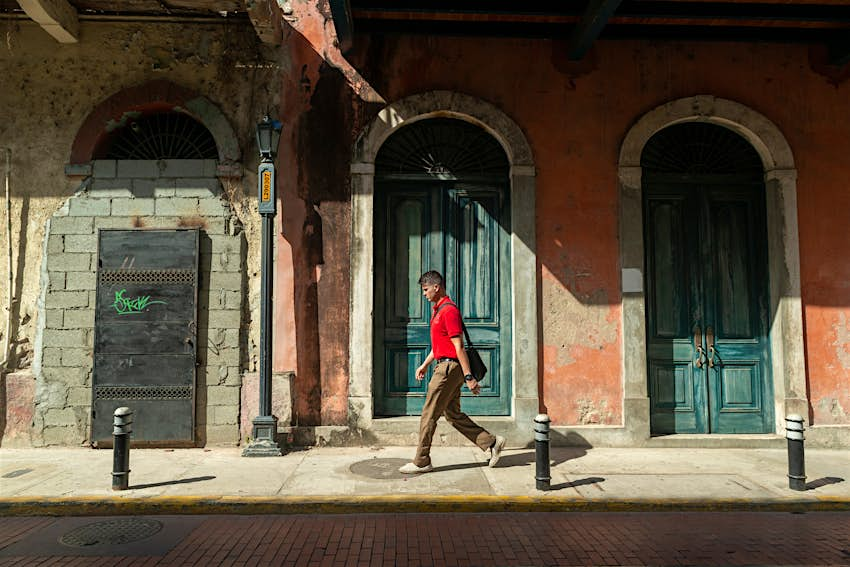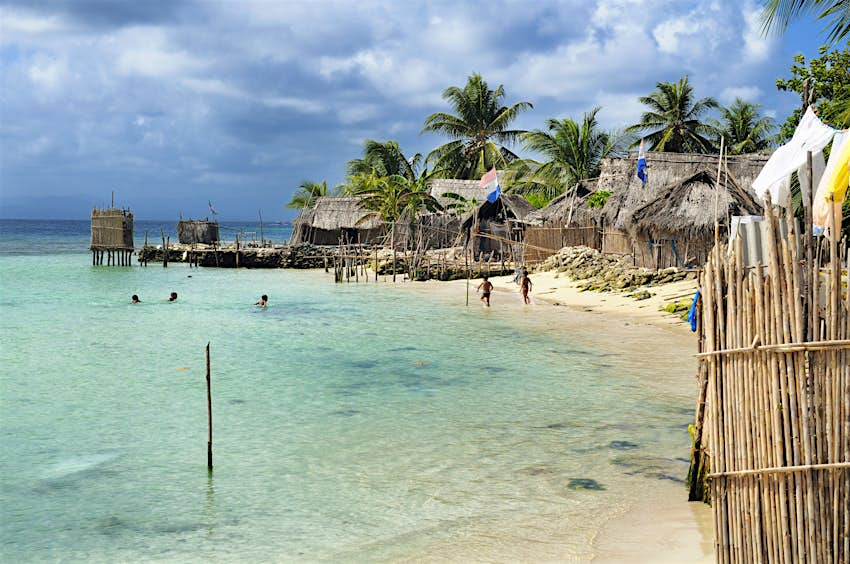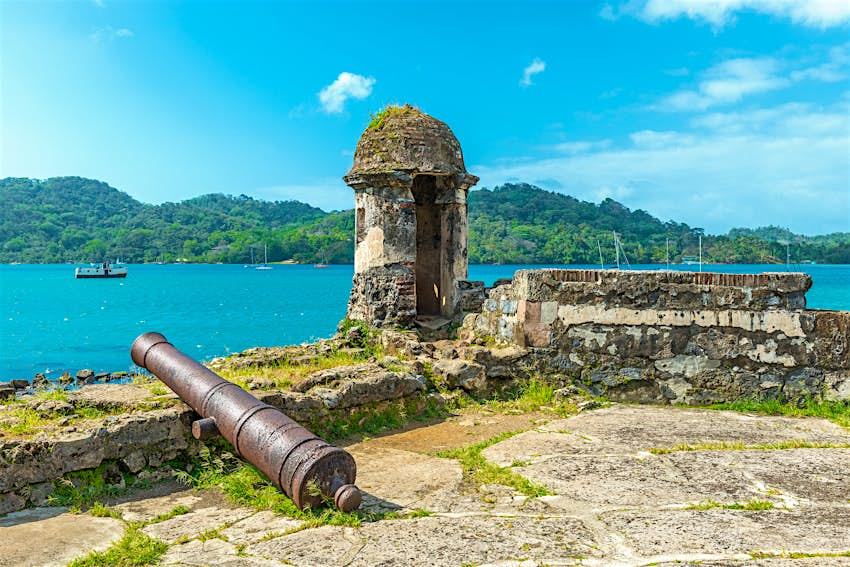(Lonely Planet) There’s much more to Panama than a world-famous waterway.
Beyond the canal, this Central American country offers so much to explore – like myriad islands, wildlife-rich tropical forests and miles of pristine coastline on two oceans.
This narrow land bridge – and biological corridor – between Costa Rica and Colombia may be compact, but it packs a lot in. From a cosmopolitan capital filled with state-of-the-art skyscrapers to the splendid isolation of the Guna Yala Archipelago, from adrenaline-fueled adventure in the highlands around Boquete to island hopping in Bocas del Toro, there’s a good chance you’ll want to extend your trip here.
Here’s our guide to the best places to visit in Panama.

Panama City overflows with culture and nightlife
Central America’s most stylish capital is a tale of three cities. Downtown is a skyscraper-packed hub of international finance, glitzy shopping malls and upscale restaurants. Across the bay, tombstone-like ruins are all that’s left of the original city, Panama Viejo, which was sacked by pirates in 1671.
Next comes Casco Viejo, which, after an ambitious restoration, has become the city’s hippest neighborhood. Boutique spots like the American Trade Hotel and stylish rooftop restaurants and bars such as Casa Casco fill the pastel-colored colonial mansions that line its cobblestone streets.
To escape the urban jungle, hike the trails of the Parque Natural Metropolitano, or cycle along the scenic Amador Causeway, where the striking Frank Gehry–designed BioMuseo celebrates the natural and cultural history of the isthmus. Oh, and you might have heard of a little canal nearby.
Get more travel inspiration, tips and exclusive offers sent straight to your inbox with our weekly newsletter.
Don’t miss the Panama Canal
The world’s most famous shortcut, the Panama Canal – dubbed “the big ditch” – has been a vital trade route between the Pacific and Atlantic oceans since it opened in 1914. An awe-inspiring feat of engineering, this man-made marvel operates around the clock and moves more than half a billion tons of goods a year.
The easiest place to watch the canal’s mechanics in action is from the viewing platforms at the four-story Miraflores Visitor Center – try to time your visit with the arrival of a mega-ship, and don’t miss the 3D movie. You can get even closer to the locks on a partial (6–7 hours) or full (10–12 hours) canal transit with Ancon Expeditions.
Head to Boquete for outdoor adventurers and fabulous coffee
Adrenaline junkies should head to the highland town of Boquete, where adventurers have their pick of rappelling, rock climbing and rafting. From the foothills of Volcán Barú, you can hike up to the summit for a show-stopping sunrise, or whizz above the slopes on a zip line. Hiking along its misty cloud forest trails in search of hidden waterfalls and elusive quetzals, shrouded in greenery and serenaded by birdsong, is a must.
After sweltering in Panama City, Boquete is – quite literally – a breath of fresh air, where shade-grown coffee plantations stretch to the horizon in an undulating patchwork of greens. Sample Panama Geisha, one of the world’s most expensive cups of joe, then feast on farm-to-table fusion fare at Italian-run Retrogusto.
Bocas del Toro is the best spot for sun, sea and cerveza
Simultaneously backpacker party hub, couples’ chilled-out Caribbean paradise and ex-pat enclave, the three main islands and scores of uninhabited islets that make up Bocas del Toro have something for everyone.
Bocas Town on Isla Colón is party central, and everything from hostels to handicraft stores are housed in brightly painted, charming clapboard buildings. Go starfish spotting at Playa Estrella, where the calm waters are perfect for snorkeling. Then kick back over killer cocktails and just-caught fish at over-the-water El Último Refugio.
For jungle-backed beaches, coral-fringed cays and magical surf breaks at Wizard Beach, island-hop to Isla Bastimentos. Home to a namesake marine park, this important conservation area contains mangroves, monkeys, crocodiles and caiman, among other wild things, with superb snorkeling and scuba diving opportunities to match.

Become a willing castaway at Comarca de Guna Yala (San Blas Islands)
Indulge your inner Robinson Crusoe on this string of jewel-like tropical islands off Panama’s Caribbean coast – all swaying palms, icing-sugar-soft white sand and azure water. The San Blas archipelago has an island for every day of the year (plus a few to spare) which offer the chance to disconnect from the world: there’s no internet, TV or telephones. Instead, idle your time away, sunning, swimming, snorkeling and stargazing.
This semi-autonomous region is home to the indigenous Guna people, who’ve fiercely protected their culture and customs – including molas, the hand-embroidered textiles designed and sewn by Guna women.
With their no-frills cane-and-palm-thatch cabañas, the island lodges are all owned and run by families from the more densely populated village-islands, such as Playón Chico.
Santa Catalina is perfect for surfers, snorkelers and scuba divers
A fishing village turned surfer haunt, Santa Catalina in the Gulf of Chiriquí has some of the best year-round breaks in Central America – no wetsuit required. Laid-back fishermen sell the catch of the day from the shade of a mango tree: expect sushi with a tropical twist.
And if you aren’t there to surf, this is the jumping-off point for Parque Nacional Coiba. At this former penal colony, dubbed “Panama’s Galápagos,” you can swim alongside the gentle giants of the sea: whale sharks (December to April) and humpback whales (August to November), along with whitetip reef sharks, rays, hawksbill turtles and shoals of technicolor fish. To access the park, you’ll need to book a tour in town.

Soak in Afro-Panamanian culture in Portobelo
Strolling around the unhurried streets of Portobelo, it’s hard to believe this was once one of the most important ports in the Caribbean, where treasure plundered from the Incas was shipped back to Spain. The ruins of often-sacked fortresses remain, with Fuerte San Jerónimo the most popular. The stone Customs House, once piled high with Peruvian gold, stands out among the clapboard houses.
Portobelo’s African roots stretch to the Congo, and two spirited and spiritual festivals celebrate the vibrant local culture: the colorful and rhythmic biannual Festival de Diablos y Congos; and October’s Festival del Cristo Negro, when the Black Christ – a life-size wooden statue steeped in myth and legend – is removed from Iglesia San Felipe and paraded around town. Spaces like Casa de la Cultura Congo help keep traditional art and music alive.
Make merry at Península de Azuero’s traditional fiestas
Farming, folklore and fiestas are the lifeblood of the Azuero Peninsula, the country’s cultural heartland, bordered by the Gulf of Chiriquí to the west and the Gulf of Panamá to the east.
Las Tablas puts on the country’s largest and loudest Carnaval celebration: expect flamboyant costumes, exuberant music and energetic dancing. Further south, the streets of Pedasí are lined with well-preserved colonial buildings. Playa Venao, a golden sweep of sand with world-class surf, is another 40 minutes south.
And for wildlife spotting, the reserves of Isla Iguana and Isla Cañas – one of the few places on the planet where olive ridley sea turtles go to nest in large numbers – are just short boat hops away.